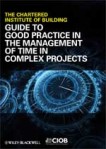Yesterday afternoon, I took time out from the work of the ISO TC 258 study group hosted in Pretoria, by the South African Bureau of Standards (SABS). The primary purpose of my trip to SA is to contribute to the work of this group, studying the current state of understanding of the concept of governance of project, program and portfolio management with a view to the possible development of an ISO standard. The ‘time out’ was to present a paper on ‘time management’ at WITS University; but this simple diversion turned into a fascinating day……
Apart from the storms hail and floods, a highlight of the visit to the university was a too quick tour of the recently opened ‘Origins Centre’ http://www.origins.org.za.
The centre showcases recent South African discoveries of two pieces of engraved ochre and, more than 60 marine-shell beads dated at 75 000 years. Theses finds, together with archaeological evidence emerging from other parts of Africa, suggest that symbolic thought and other forms of behaviour regarded as characteristic of modern human beings, began in Africa as far back as 200 000 years ago. This combination of palaeoanthropological and archaeological evidence confirms the hypothesis that fully modern human beings evolved in Africa first, and then left the continent to populate the entire world.
The two overwhelming impressions I took away from the displays were:
• Firstly the intrinsic oneness of mankind – the differences are minute compared to the common bonds and heritage.
• The second was the ever accelerating rate of change in the technologies we use. Every ‘new age’ of development occupied a fraction of the time of its predecessor starting with the ‘old stone age’ which lasted over 2 million years. The ‘middle stone’ age lasted some 250,000 years, followed by the ‘new stone age’ which lasted less than 10,000 years and finished with the start of the modern era some 5000 years ago – the modern era includes the Bronze and Iron ages, leading through to modern times.
After considering the ‘historical aspects of time’ it was onto the ‘management of time’ and planning the future… The presentation is on our website at http://www.mosaicprojects.com.au/Resources_Papers_163.htmlx. The three underlying messages in the presentation are:
• Plan what you know ‘budget the rest’
• Useful schedules are useful because they are used (ie, effective communication media)
• The future is unpredictable so expect change.
The last of these points was brought home immediately after the lecture concluded. My hosts had arranged a dinner at a local restaurant; however, the afternoon storms had flooded the bridge leading to the restaurant and it took a number of attempts to find a way around – the 8:00pm meal started nearer to 9:00pm! Good communication and adaptability led to a great evening but the original plan had to be revised to accommodate reality.
The pride passion and hospitality of South Africans is amazing I certainly hope to be able to return at some time in the not too far distant future.





